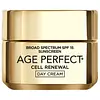What's inside
What's inside
 Key Ingredients
Key Ingredients

 Benefits
Benefits

 Concerns
Concerns

 Ingredients Side-by-side
Ingredients Side-by-side

Water
Skin ConditioningSodium Hyaluronate
HumectantPentylene Glycol
Skin ConditioningPropanediol
SolventSodium Hyaluronate Crosspolymer
HumectantPanthenol
Skin ConditioningAhnfeltia Concinna Extract
Skin ConditioningGlycerin
HumectantTrisodium Ethylenediamine Disuccinate
Citric Acid
BufferingIsoceteth-20
EmulsifyingEthoxydiglycol
HumectantEthylhexylglycerin
Skin ConditioningHexylene Glycol
Emulsifying1,2-Hexanediol
Skin ConditioningPhenoxyethanol
PreservativeCaprylyl Glycol
EmollientWater, Sodium Hyaluronate, Pentylene Glycol, Propanediol, Sodium Hyaluronate Crosspolymer, Panthenol, Ahnfeltia Concinna Extract, Glycerin, Trisodium Ethylenediamine Disuccinate, Citric Acid, Isoceteth-20, Ethoxydiglycol, Ethylhexylglycerin, Hexylene Glycol, 1,2-Hexanediol, Phenoxyethanol, Caprylyl Glycol
Water
Skin ConditioningGlycerin
HumectantAlcohol Denat.
AntimicrobialHydrogenated Polyisobutene
EmollientBis-PEG-18 Methyl Ether Dimethyl Silane
EmollientDimethicone
EmollientCetearyl Alcohol
EmollientPEG-100 Stearate
PEG-20
HumectantPetrolatum
EmollientButyrospermum Parkii Butter
Skin ConditioningC13-14 Isoparaffin
EmollientGlyceryl Stearate
EmollientDimethiconol
EmollientDimethyl Isosorbide
SolventCetearyl Glucoside
EmulsifyingNeohesperidin Dihydrochalcone
MaskingSodium Cocoyl Glutamate
CleansingSodium Hyaluronate
HumectantSodium Hydroxide
BufferingCyclodextrin
AbsorbentAdenosine
Skin ConditioningVigna Aconitifolia Seed Extract
Skin ConditioningMannitol
HumectantDisodium EDTA
Disodium Succinate
MaskingHydrolyzed Cicer Seed Extract
Skin ProtectingCapryloyl Salicylic Acid
ExfoliatingLaureth-7
EmulsifyingYeast Extract
Skin ConditioningXanthan Gum
EmulsifyingPolyacrylamide
Acrylates/C10-30 Alkyl Acrylate Crosspolymer
Emulsion StabilisingCetyl Alcohol
EmollientOctyldodecanol
EmollientTocopheryl Acetate
AntioxidantSodium Dehydroacetate
PreservativePhenoxyethanol
PreservativeCI 14700
Cosmetic ColorantCI 19140
Cosmetic ColorantLinalool
PerfumingGeraniol
PerfumingAlpha-Isomethyl Ionone
PerfumingLimonene
PerfumingHydroxycitronellal
PerfumingCitronellol
PerfumingHexyl Cinnamal
PerfumingBenzyl Alcohol
PerfumingBenzyl Salicylate
PerfumingParfum
MaskingWater, Glycerin, Alcohol Denat., Hydrogenated Polyisobutene, Bis-PEG-18 Methyl Ether Dimethyl Silane, Dimethicone, Cetearyl Alcohol, PEG-100 Stearate, PEG-20, Petrolatum, Butyrospermum Parkii Butter, C13-14 Isoparaffin, Glyceryl Stearate, Dimethiconol, Dimethyl Isosorbide, Cetearyl Glucoside, Neohesperidin Dihydrochalcone, Sodium Cocoyl Glutamate, Sodium Hyaluronate, Sodium Hydroxide, Cyclodextrin, Adenosine, Vigna Aconitifolia Seed Extract, Mannitol, Disodium EDTA, Disodium Succinate, Hydrolyzed Cicer Seed Extract, Capryloyl Salicylic Acid, Laureth-7, Yeast Extract, Xanthan Gum, Polyacrylamide, Acrylates/C10-30 Alkyl Acrylate Crosspolymer, Cetyl Alcohol, Octyldodecanol, Tocopheryl Acetate, Sodium Dehydroacetate, Phenoxyethanol, CI 14700, CI 19140, Linalool, Geraniol, Alpha-Isomethyl Ionone, Limonene, Hydroxycitronellal, Citronellol, Hexyl Cinnamal, Benzyl Alcohol, Benzyl Salicylate, Parfum
 Reviews
Reviews

Alternatives
Ingredients Explained
These ingredients are found in both products.
Ingredients higher up in an ingredient list are typically present in a larger amount.
Glycerin is already naturally found in your skin. It helps moisturize and protect your skin.
A study from 2016 found glycerin to be more effective as a humectant than AHAs and hyaluronic acid.
As a humectant, it helps the skin stay hydrated by pulling moisture to your skin. The low molecular weight of glycerin allows it to pull moisture into the deeper layers of your skin.
Hydrated skin improves your skin barrier; Your skin barrier helps protect against irritants and bacteria.
Glycerin has also been found to have antimicrobial and antiviral properties. Due to these properties, glycerin is often used in wound and burn treatments.
In cosmetics, glycerin is usually derived from plants such as soybean or palm. However, it can also be sourced from animals, such as tallow or animal fat.
This ingredient is organic, colorless, odorless, and non-toxic.
Glycerin is the name for this ingredient in American English. British English uses Glycerol/Glycerine.
Learn more about GlycerinPhenoxyethanol is a preservative that has germicide, antimicrobial, and aromatic properties. Studies show that phenoxyethanol can prevent microbial growth. By itself, it has a scent that is similar to that of a rose.
It's often used in formulations along with Caprylyl Glycol to preserve the shelf life of products.
Sodium Hyaluronate is hyaluronic acid's salt form. It is commonly derived from the sodium salt of hyaluronic acid.
Like hyaluronic acid, it is great at holding water and acts as a humectant. This makes it a great skin hydrating ingredient.
Sodium Hyaluronate is naturally occurring in our bodies and is mostly found in eye fluid and joints.
These are some other common types of Hyaluronic Acid:
Learn more about Sodium HyaluronateWater. It's the most common cosmetic ingredient of all. You'll usually see it at the top of ingredient lists, meaning that it makes up the largest part of the product.
So why is it so popular? Water most often acts as a solvent - this means that it helps dissolve other ingredients into the formulation.
You'll also recognize water as that liquid we all need to stay alive. If you see this, drink a glass of water. Stay hydrated!
Learn more about Water